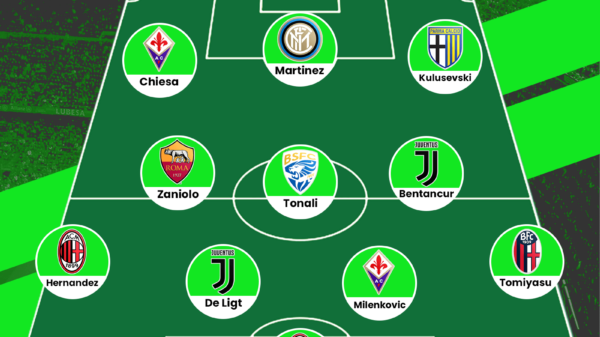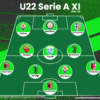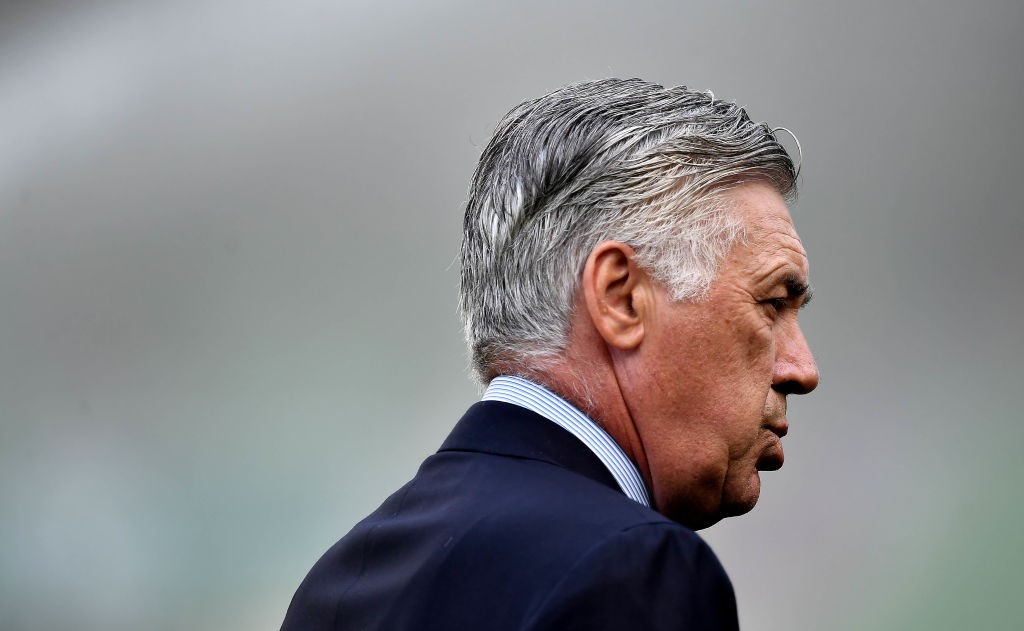James Sutherland provides tactical insight into the Serie A game that finished Juventus 2-1 Fiorentina.
Kicking off the Serie A season this weekend, Juventus hosted Fiorentina. Separated by nearly 30 points last season, the gap between the two teams has grown larger over the summer. Juventus, despite the departure of Paul Pogba for a world record fee, actually strengthened their squad in terms of quality and depth. Miralem Pjanic was bought to replace Pogba in central midfield, while Juve set an Italian record fee when they bought Gonzalo Higuain from rivals Napoli. Dani Alves and Mehdi Benatia in defense, as well as Marko Pjaca in midfield, were brought in to add to what is an already deep and talented squad. Juventus are looking to mount a serious (and perhaps final for Buffon) challenge for the Champions League after a half decade of total and complete domestic dominance.
Most remarkably, their dominance of Italy has undoubtedly grown this summer. Pjanic and Higuain were snagged from Roma and Napoli respectively, Juve’s two major rivals for the Scudetto. The two weren’t just squad players however. Each was an important, if not the most important, attacking player for their old teams. Higuain was the deadliest striker in Italy, setting a league record with 36 goals, while Pjanic helped drive Roma’s powerful midfield. So those transfers were double wins for Juventus: they strengthened themselves and considerably weakened their rivals.
Line-Ups

Made using Tactical Pad
Juventus (3-5-2): Buffon; Chiellini, Bonucci, Barzagli; Sandro, Asamoah, Lemina, Khedira, Alves; Mandzukic, Dybala
Fiorentina (3-4-2-1): Tatarusanu; Astori, Rodriguez, Tomovic; Alonso, Badelj, Vecino, Bernadeschi; Chiesa, Jlicic; Kalinic
Looking for a strong start to the campaign, Max Allegri was without Claudio Marchisio, his normal no. 6, due to injury. Higuain and Pjanic both started on the bench, still recovering from a summer of international football. Despite their absences, Juventus started a very talented lineup. Anchored by the defense that has held Juve’s side together for five seasons, Buffon, Barzagli, Bonucci and Chiellini, Allegri started a side of familiar names. Sami Khedira, Kwadwo Asamoah and Mario Lemina played in central midfield, with Alex Sandro and debutant Alves on the wings. Pablo Dybala and Mario Mandzukic, a formidable strike pair even without Higuain, completed the 3-5-2.
Fiorentina, on the other hand, played a 3-4-2-1. The formation, while flawed offensively, gave them a solid defensive base (see below).
Both sides employ a man-oriented press
Juventus’ dominance over the visitors was clear from the start of this match. Fiorentina bravely tried to hold the ball in the beginning, but within ten minutes of the opening whistle Juve had settled into sustained possession.
Fiorentina struggled to break out of their own half as the game wore on for several reasons. Juventus employed a strong counterpress that stopped Fiorentina from getting out on the break or retaining possession.
Max Allegri’s team also played a good press, especially off dead balls. It was very man orientated, meaning that often times Juve’s 3-5-2 shape morphed into a 3-4-3.
This press cut off the forward passing options for Ciprian Tatarusanu, Fiorentina’s goalkeeper, and forced him to play the ball long to the front line, where Juventus’ back three of Bonucci, Barzagli and Chiellini consistenly won every first header. Even when Juve didn’t win the first ball, their structure was strong and allowed them to recover possession off the second ball, or press Fiorentina hard if they got the loose ball.
Both factors, combined with Juventus’ strong possession play and individual talent, allowed Juventus to control the ball and the game for the majority of the first half.
Fiorentina, meanwhile, also pressed on occasion. Like Juventus, they mainly pressed off dead balls or when they had just lost the ball, but as the game wore on and they had less and less of the ball, Fiorentina also pressed up whenever Juventus passed the ball backwards. Juventus would often shift the ball back to Buffon, or the back three at least, after a failed corner or free kick, offering Fiorentina the chance to press higher and force Juventus deeper into their own half, like in the video below.
Like Juventus, Fiorentina used a man press when they did push higher. And, like Juventus, the effect this had was to cut off the forward options, forcing the Juve player on the ball to either dribble into a trap or play a long pass to the strikers. Because of their numerical superiority at the back, 3 defenders v. 2 strikers (also like Juve), Fiorentina nearly always won the ball.
Fiorentina defend the center
For the most part, however, Fiorentina sat back in a mid block and defended the center. Their 3-4-2-1, a near Christmas tree formation, gave them strong control of the middle. Fiorentina leveraged this to their advantage, forcing Juve out of the middle and to the wings. Most importantly they were able to shut down the effectiveness of Bonucci, Juve’s most important playmaker and the central defender in the back three. Fiorentina forced Juventus to run their build up through Chiellini and Barzagli wider, not bad options but much less potent offensively.
Above you can see Fiorentina’s control of the center. Chiellini has the ball wide and is not under any pressure but he has no passing options. Even with Juventus stretching to cover the whole field in a balanced shape, Fiorentina still has a strong level of horizontal and vertical compactness, allowing them to cut off Chiellini’s options.
Chiellini is forced to pass the ball back to Bonucci, who tries to go over Fiorentina’s first two lines. What results is above. Asamoah has the ball in the half space, in what should be a good position, but once again has no forward options. This time Fiorentina does close him down, forcing Asamoah to pass. The ball goes forward to Dybala, who is also pressed and forced to pass the ball back to Barzagli, right where Juve started.
This lack of central progression is evident from Juve’s position map (courtesy @11tegen11). You can clearly see that Juventus have formed the dreaded “U shape,” as the ball is passed from one end of the back 5 to the other. While Fiorentina were unable to regain and hold possession, they did succeed in making the majority of Juve’s possession stale and ineffective.
Seems like a fair bit of U-passing by Juve.
They did reach Dybala a lot though. pic.twitter.com/5JdUfv83GH— 11tegen11 (@11tegen11) August 21, 2016
Dybala’s significance is interesting. As the match wore on, he took an increasingly free positional role, drifting to the wing and into midfield, sometimes as far back as Mario Lemina in defensive midfield, in an effort to get more touches. He showed great intelligence in his movement, often drawing the attention of Fiorentina and opening passing lanes for his teammates. Dybala also helped created overloads on the wings, which Juventus increasingly used later in the match to circumvent Fiorentina in the middle.
It was clear from the match the Juventus missed Claudio Marchisio and Pjanic in central midfield. Both players act as playmakers, working with Bonucci to take advantage of Juve’s strong structure and create chances. Lemina didn’t have the positional intelligence to free himself of Fiorentina’s front three defenders, and when he was on the ball failed to find and execute passes that would have opened Fiorentina up.
Marchisio will be out for at least four more months, so the burden will be on Pjanic to create from deep midfield.
Pogba’s presence was also missed. His ability to dribble through defenses and then lay the ball off to open teammates would have allowed Juve a way to drive through, rather than around or over, Fiorentina.
Allegri’s side controls the game from start to finish
Despite their flaws, Juventus handled Fiorentina easily. The visitors created almost no offense, with various models putting their xG totals between 0.2 and 0.23. While Fiorentina was able to limit Juventus’ offense, this came at the price of sitting deep within their own half and out of control. Allegri’s side controlled the game from start to finish.
Fiorentina was pushed back into a deep stance, and had trouble getting forward links from their full-backs. pic.twitter.com/CSieQU4p1W
— 11tegen11 (@11tegen11) August 21, 2016
They got their first goal through a great Sami Khedira header in the 36th minute. When Fiorentina equalized in the 70th minute, Juventus quickly retook the lead. Higuain, in his first Bianconeri appearance, scored a poacher’s goal, tapping in a deflected Khedira shot. His movement in the build up to the goal was sublime, however. His diagonal run across the box dragged Fiorentina’s last centerback away from Khedira, leaving the midfielder alone on the edge of the box. It is right that Higuain finished the goal anyway.
More intelligent striker movement from Juve: Higuain drags the CB away, freeing Khedira’s inital shot up pic.twitter.com/TJ0M568y0z
— James Sutherland (@thepitchview) August 21, 2016
Conclusion
This game was a classic Juventus performance. They held the ball and dominated their opposition, dictating the tempo of the game. While it wasn’t an amazing offensive performance, they created a little over 1.2 xG, very good considering they scored 2 goals.
This campaign will be a pivotal and potentially historic one for Juventus and Allegri. After winning their 5th straight Scudetto last season, and in dominating fashion (finishing 9 points above Napoli and failing to lose after November), Juventus has turned its attention to Europe. Like PSG and Bayern, who face little domestic competition, Juventus are looking for new challenges. With the depth and talent of their squad, combined with a brilliant manager and strong tactical base, Juventus are one of the main contenders for the Champions League.
- Tactical Analysis: Sevilla 2-1 Real Madrid | Sevilla finally end the unbeaten streak - January 21, 2017
- Tactical Analysis: Borussia Dortmund 8-4 Legia Warsaw | Defence thrown out of the windows - November 27, 2016
- Tactical Analysis: RB Leipzig 1-0 Borussia Dortmund | Leipzing outpress Dortmund - September 18, 2016





























































